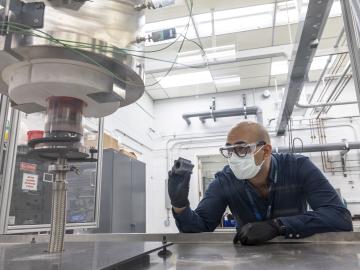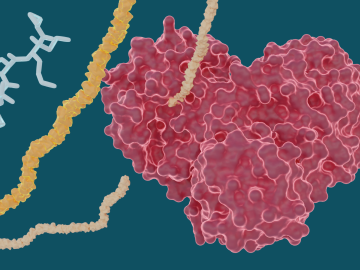
Filter News
Area of Research
News Type
News Topics
- (-) Advanced Reactors (10)
- (-) Bioenergy (28)
- (-) Biomedical (20)
- (-) Coronavirus (27)
- (-) Frontier (9)
- (-) Materials Science (40)
- (-) Security (7)
- 3-D Printing/Advanced Manufacturing (31)
- Artificial Intelligence (16)
- Big Data (11)
- Biology (26)
- Biotechnology (5)
- Buildings (8)
- Chemical Sciences (18)
- Clean Water (4)
- Composites (2)
- Computer Science (46)
- Critical Materials (3)
- Cybersecurity (10)
- Element Discovery (1)
- Energy Storage (31)
- Environment (46)
- Exascale Computing (9)
- Fossil Energy (1)
- Fusion (17)
- Grid (12)
- High-Performance Computing (13)
- Hydropower (3)
- Isotopes (10)
- ITER (2)
- Machine Learning (12)
- Materials (26)
- Mathematics (2)
- Mercury (2)
- Microscopy (16)
- Molten Salt (1)
- Nanotechnology (21)
- National Security (16)
- Neutron Science (39)
- Nuclear Energy (34)
- Partnerships (7)
- Physics (22)
- Polymers (9)
- Quantum Computing (7)
- Quantum Science (19)
- Simulation (3)
- Space Exploration (3)
- Summit (19)
- Transportation (18)
Media Contacts

To explore the inner workings of severe acute respiratory syndrome coronavirus 2, or SARS-CoV-2, researchers from ORNL developed a novel technique.

A novel method to 3D print components for nuclear reactors, developed by the Department of Energy’s Oak Ridge National Laboratory, has been licensed by Ultra Safe Nuclear Corporation.

Neuromorphic devices — which emulate the decision-making processes of the human brain — show great promise for solving pressing scientific problems, but building physical systems to realize this potential presents researchers with a significant

As ORNL’s fuel properties technical lead for the U.S. Department of Energy’s Co-Optimization of Fuel and Engines, or Co-Optima, initiative, Jim Szybist has been on a quest for the past few years to identify the most significant indicators for predicting how a fuel will perform in engines designed for light-duty vehicles such as passenger cars and pickup trucks.

Six ORNL scientists have been elected as fellows to the American Association for the Advancement of Science, or AAAS.

The annual Director's Awards recognized four individuals and teams including awards for leadership in quantum simulation development and application on high-performance computing platforms, and revolutionary advancements in the area of microbial

David Kropaczek, director of the Consortium for Advanced Simulation of Light Water Reactors, or CASL, at the Department of Energy’s Oak Ridge National Laboratory, has been named a fellow of the American Nuclear Society.

Seven ORNL scientists have been named among the 2020 Highly Cited Researchers list, according to Clarivate, a data analytics firm that specializes in scientific and academic research.

A multi-institutional team, led by a group of investigators at Oak Ridge National Laboratory, has been studying various SARS-CoV-2 protein targets, including the virus’s main protease. The feat has earned the team a finalist nomination for the Association of Computing Machinery, or ACM, Gordon Bell Special Prize for High Performance Computing-Based COVID-19 Research.

Experiments led by researchers at ORNL have determined that several hepatitis C drugs can inhibit the SARS-CoV-2 main protease, a crucial protein enzyme that enables the novel coronavirus to reproduce.


